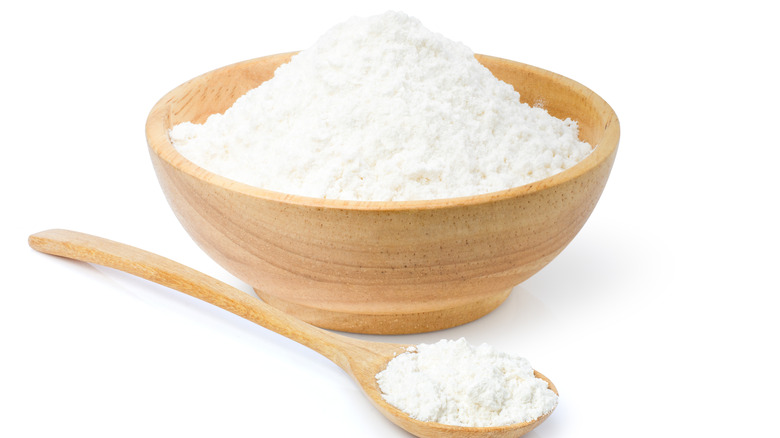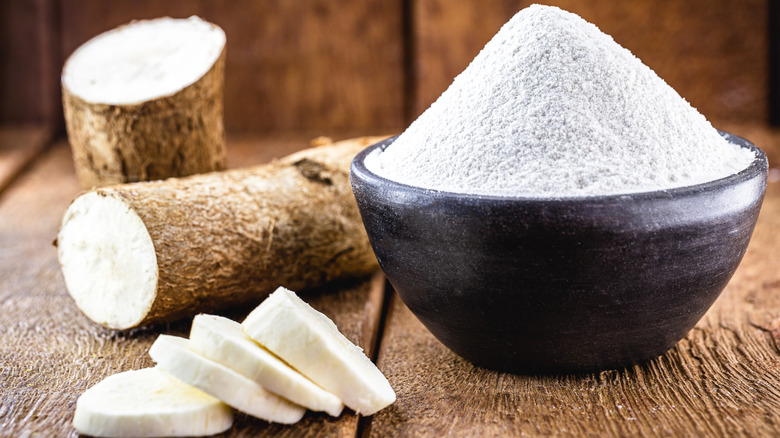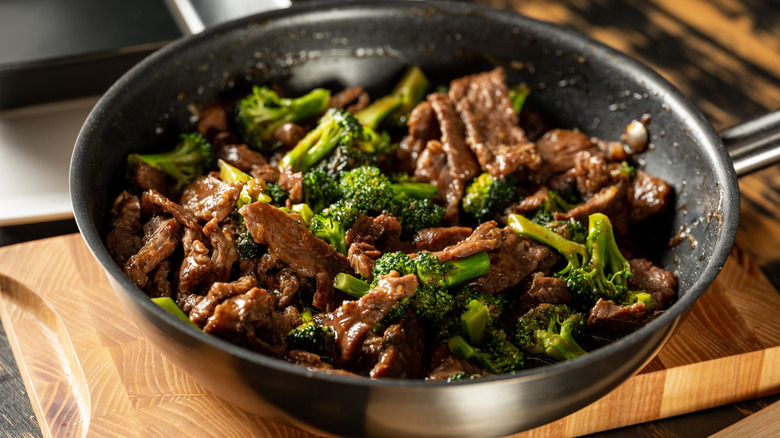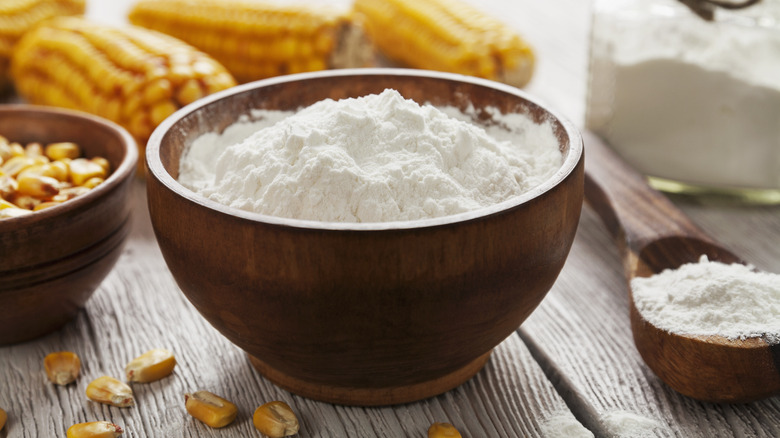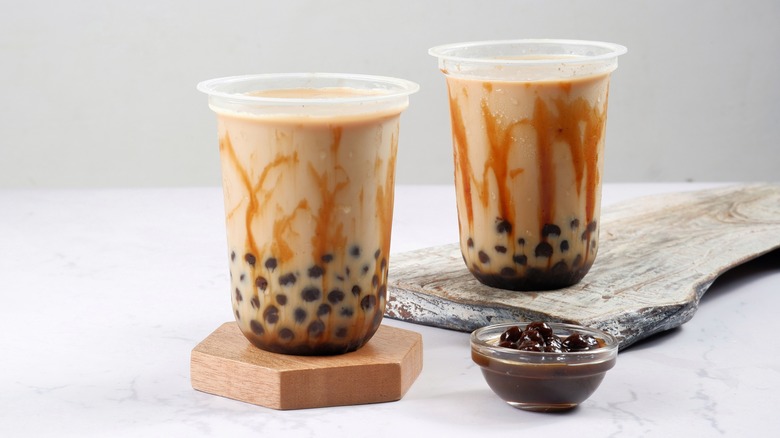What Is Tapioca And How Do You Cook It?
Pudding, or maybe boba tea, typically comes to mind when we hear the word "tapioca." While those are two of the most common uses for tapioca, it's also become a fairly popular contender in the gluten-free flour aisle, and with good reason. Just like gluten, Tapioca is great for adding texture to both sweet and savory dishes. You'll often come across it as a component in gluten-free and paleo baking flour mixes.
It's similar in appearance and use to cornstarch. However, unlike cornstarch, which has a pretty clear-cut name indicating what it's made of, tapioca is not made from some elusive tapioca plant. It's made from a South American vegetable called cassava, and the name is derived from the Tupí word for starch. And starch is exactly what it is. What are this starch's best uses? Is it interchangeable with cornstarch, and how does it fare from a nutrition standpoint?
How is tapioca made?
Tapioca is made from a starchy vegetable called cassava, also commonly referred to as yucca. Just like its cousin, the potato, cassava is an underground plant known as a tuber. To make tapioca starch, the flesh of the cassava is smashed into a paste or pulp. That pulp is then squeezed to get all the juices out. Once dried, the juices become a very fine flour-like powder. You will mostly find it in its starch form, though it can also be found as flakes or pearls (Think boba tea and pudding).
While sometimes labeled as tapioca flour, tapioca is a starch. And although made from the cassava plant, it differs from the bags of cassava flour you may come across. To make cassava flour, the entire root vegetable is used as opposed to just extracting the starch from the juices of its flesh. The two are generally not interchangeable due to different fiber content.
How to cook with tapioca starch
Mainly used as a thickener in dishes and to add texture to baked goods, tapioca starch is flavorless and very starchy. When added to a sauce or gravy, it helps bind the ingredients and soften the texture of the dish. If you add it directly to a hot liquid, it will clump. Therefore, making a slurry first is advisable. Add a small amount to cold water and mix well. Then, add it to the sauce or gravy until it reaches the consistency and thickness you're after.
When used in baked goods, it adds a chewy, gummy texture, much like gluten. It also helps keep the final product moist but not soggy. Tapioca adds the perfect jelly composition to jams, custards, and pie fillings.
Tapioca starch is also great for coating meats before cooking for a crispy exterior. Think of such dishes as chicken nuggets or beef and broccoli stir fry.
Can tapioca replace cornstarch?
Cornstarch is made from maize (corn) in a similar process. Swapping tapioca for cornstarch is pretty straightforward. However, there are a few minor differences to keep in mind.
When it comes to thickening sauces or giving a gel-like texture to dishes such as that pie filling, the two are completely interchangeable. However, a bit more tapioca will be needed — a ratio of about 2-to-1.
The two areas in which they differ are the appearance of the final product and temperature. Tapioca lends a glossy finish (Again, think cherry pie filling), while cornstarch is more on the matte end of the spectrum (Better for Thanksgiving gravy).
Tapioca can withstand cold temperatures, making it perfect for products you wish to freeze, whereas cornstarch begins to break down. At much higher temperatures, such as boiling, tapioca will become stringy, while cornstarch will stay intact.
Is tapioca healthy?
As it's a starch made from a root vegetable, tapioca is high in carbohydrates and very low in fiber, per Very Well Fit. This leaves it with an elevated glycemic load, which is how much it will raise your blood sugar levels upon consumption of a standard serving size. Keep in mind that any sweet application of tapioca, such as when it's formed into balls for bubble tea, will have added sugar.
It is nearly fat-free and only has a trace amount of protein, making it pretty much a one-category macronutrient food. It does contain some iron, but it's not a good source of other vitamins and minerals.
It's perfect for those looking for an allergy-friendly, gluten-free, vegan starch substitute for cooking that is also a resistant starch. Our bodies are unable to digest resistant starches, leaving them as food for our healthy bacteria buddies in our guts.
